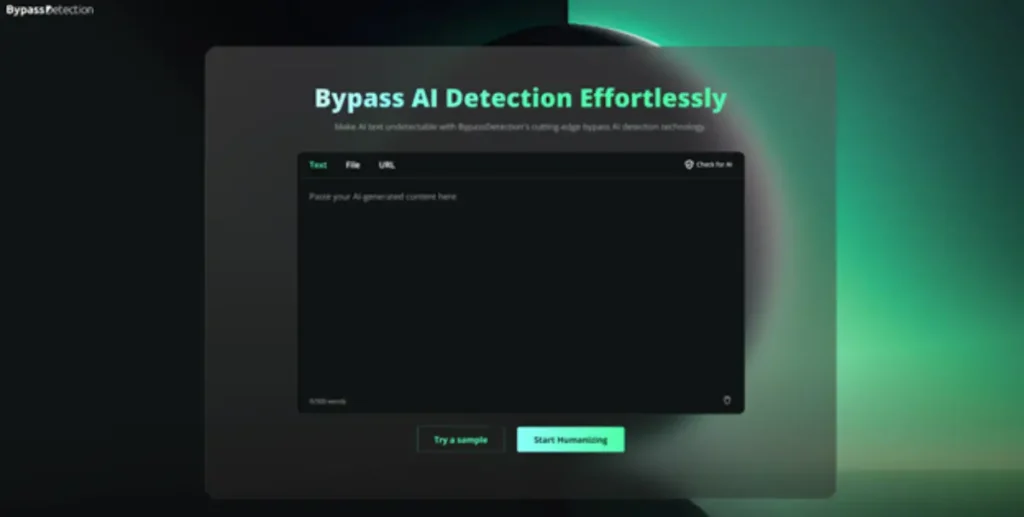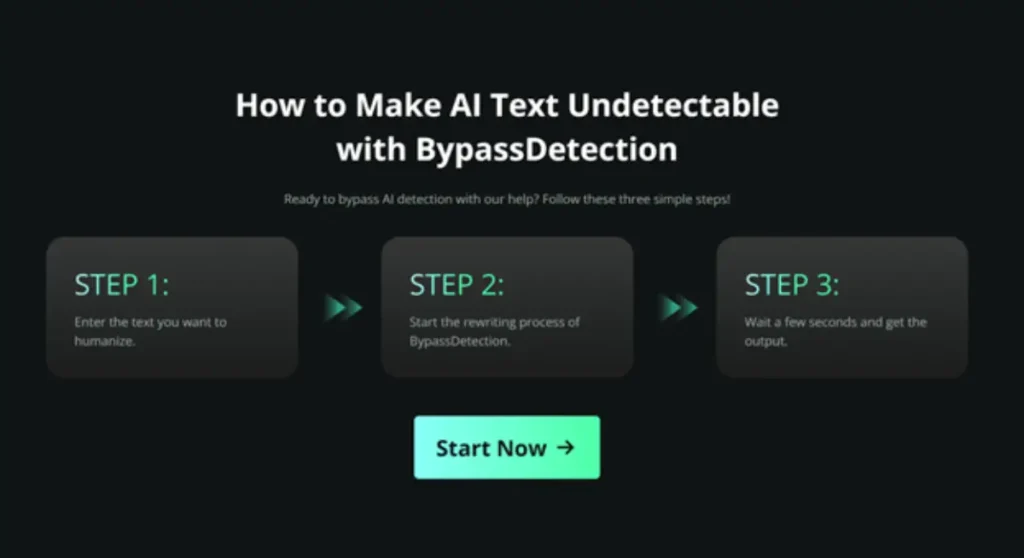Last Updated on 2 years ago by Nicky Johnson
Human language is especially difficult to replicate because it is deeply nuanced, contextual, and ever-evolving. Artificial Intelligence (AI) has made remarkable strides in mimicking human speech and writing, but it often falls short of what is naturally human. Here comes a platform that designers insist can help AI text seem more human-like.
This BypassDetection review aims to guide you through the intriguing details of the platform. The work this platform is pursuing is indeed fascinating, if not downright revolutionary.
A World Dominated by AI
Blog Contents
Computers have evolved to the point of understanding human language and executing sophisticated conversations that are almost indistinguishable from human interaction.
From animation films to customer service, AI programs integrating humanistic conversational behavior have begun to appear everywhere.
However, there is an unsettling sense of alienation or ‘detachment’ with even sophisticated AI-generated text. This is where BypassDetection comes into the picture.
Why is Naturalness in AI Text Important?
The need to humanize AI text results from our inherent desire to connect. Even though AI systems have become increasingly adept at producing linguistically correct utterances, they often lack depth, emotional resonance, or the subtle irregularities that make language ‘human.’
This demands the need for a tool that can bypass AI detection software by making the AI appear more human-like. Enter BypassDetection, a product designed just for that purpose.
A Sneak Peek into BypassDetection

BypassDetection is a tool designed to help AI-generated content bypass AI detection software. It is a ground-breaking AI innovation aiming to humanize robot-generated text by reducing the robotic feel. The developers assert that it can enhance AI-produced content to a degree where it becomes almost indistinguishable from human-written material.
Understanding How It Works
BypassDetection works by cleverly masking AI fingerprints, replacing them with human-like textual attributes. The entire process is sophisticated and fast, transforming robotic text in a flash. It is convenient, practical, and usable for a variety of purposes.
The tool uses powerful algorithmic processes that rework the text in real time. AI fingerprints are detected, identified, and camouflaged. Words are shuffled around, synonyms are inserted, all while ensuring the original meaning and context are not lost.

All this is to ensure that the AI-generated text can bypass AI checkers for free and look less robotic to human readers. The tool elegantly transforms AI-generated content into pieces that feel more personal and relatable to the readers.
Using BypassDetection: A User’s Perspective
What sets BypassDetection apart is its simple, user-friendly interface. Users can just paste AI-generated content in a box and watch BypassDetection work its magic. The immediate translation into a more human-like text is available within seconds.
To get a comprehensive understanding, users can experiment with different texts to see how BypassDetection alters content. It gives a clear insight into the subtle changes that the tool makes to ensure naturalness and readability.
Performance and Effectiveness
BypassDetection’s performance, as reported in this BypassDetection review, has been predominantly positive. Users have reported highly satisfactory results, claiming that the transformed text reads naturally and fluidly.
The strength of BypassDetection is its ability to retain the essential meaning, the essence of the original content while altering the mechanical signature of AI. It makes the transformed text engaging, easy to understand, and free from the blatant robotic tone commonly associated with AI-generated content.
The Future of BypassDetection: Potential Impacts and Benefits
Despite the groundbreaking capacities of BypassDetection, it must not be ignored that humanizing AI text has diverse implications. If AI-generated texts can be made indistinguishable from human-produced texts, there will probably be concerns about transparency and authenticity.
Yet, BypassDetection’s potential benefits cannot be ignored. Its use in businesses could revolutionize customer service by making AI bots sound more friendly and relatable. It can also be a boon to content creators, allowing them to streamline their creative process via AI tools, yet retaining the ‘human touch.’
Making AI More Ethical
While AI can mimic human actions, transparency must be maintained about its use. Shaping AI to sound more human isn’t about deception but enhancing any AI-human interactions.
As the AI era progresses, it becomes important that AI devices ‘understand’ and ’emulate’ human intricacy. This ethical aspect of AI development continues to be a topic for further discussion by scholars and professional bodies.
In Conclusion: Is BypassDetection a Game-Changer?
BypassDetection is certainly a pioneering tool in AI innovation and holds great promise. It is not merely about creating a façade of human-like text but also about enhancing AI’s potential to improve how we live and work. It could change the game by creating a more harmonious blending of humans and AI in our society.
As we ponder upon this marvel, let’s remember that, just like any other technological innovation, BypassDetection both poses challenges and presents opportunities. Balancing the marvel of technological advancement with responsible use is the goal.
The journey of BypassDetection is one to watch closely, as it is a hefty stride towards a future where machines can hold conversations as naturally as humans do. So, let’s gear up and embrace this fascinating fusion of technology and human linguistics!







